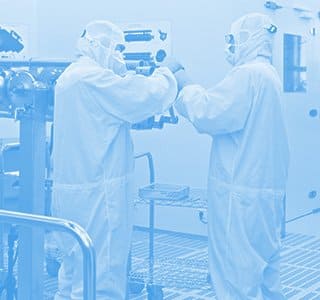
Work on MITICA is at full swing
One of the world’s largest research and engineering projects is the construction of the fusion reactor ITER which aims at replicating the fusion processes of the Sun to create energy on earth. We at RI Research Instruments GmbH are excited contributing to this huge international endeavor.
While the construction of ITER is currently under way in the south of France, key components for the reactor are developed and tested in various places around the globe. One of these components, for which RI produces acceleration grids, is the MITICA Beam Source (Megavolt ITER Injector & Concept Advancement), a one-to-one test beam source of the ITER particle beam heating source, which will be erected at Consorzio RFX in Padua. In MITICA, 1280 individual particle beams will be accelerated, neutralized, and diagnostically analyzed. The experiment will serve as input for the production of the two ITER particle beam heating sources, for which the procurement will start 2025.
Back in 2016, RI Research Instruments GmbH was awarded the Design Revision of the Acceleration Grids of the MITICA Beam Source. One year later, after successfully completing this design revision, RI was contracted by the consortium Alsyom/SEIV, which builds the complete MITICA beam source, to manufacture, test, and deliver one prototype and 28 acceleration grids in total. By now, the prototype and 20 of these grids have already been shipped to Alsyom/SEIV. The remaining 8 acceleration grids will be delivered by the end of 2021.
The acceleration grids are the key components to accelerate the 1280 particle beams, and to keep each particle beam on its critical path. Each grid is a concave electrostatic lens with 320 beam holes in its surface. By arranging 4 grids on top of each other, an acceleration stage is formed. MITICA has five such acceleration stages in total, each with an electrostatic potential difference of 200 kV to its neighbor. These acceleration stages produce particle beams with a kinetic energy of 1 MeV.
The challenge in manufacturing these acceleration grids is the highly precise milling of the holes into the cold rolled copper plates the grids are made of. We ensure this level of precision with a highly optimized manufacturing sequence, established during the last decade of manufacturing high precision copper components: Another complexity of the manufacturing of the acceleration grids is the integration of cooling channels very close to the individual beam holes. We realize thoses channels by means of intermediate electroplating processes. This however introduces stress and deformation into the plates that have to be corrected by intermediate rectifying and taken into account during the final milling operation.
Corporate Headquarters
RI Research Instruments GmbH
Friedrich-Ebert-Straße 75
51429 Bergisch Gladbach
Germany
Tel.: +49 2204 – 7674 – 100
(New since August 2024)
Dortmund site
RI Research Instruments GmbH
Hauert 15
44227 Dortmund
Germany
Tel.: +49 2 31 – 4764 – 590
Obereschbach site
RI Research Instruments GmbH
Heinz-Fröling-Straße 3
51429 Bergisch Gladbach
Germany
Tel.: +49 2204 – 7674 – 100
(New since August 2024)

